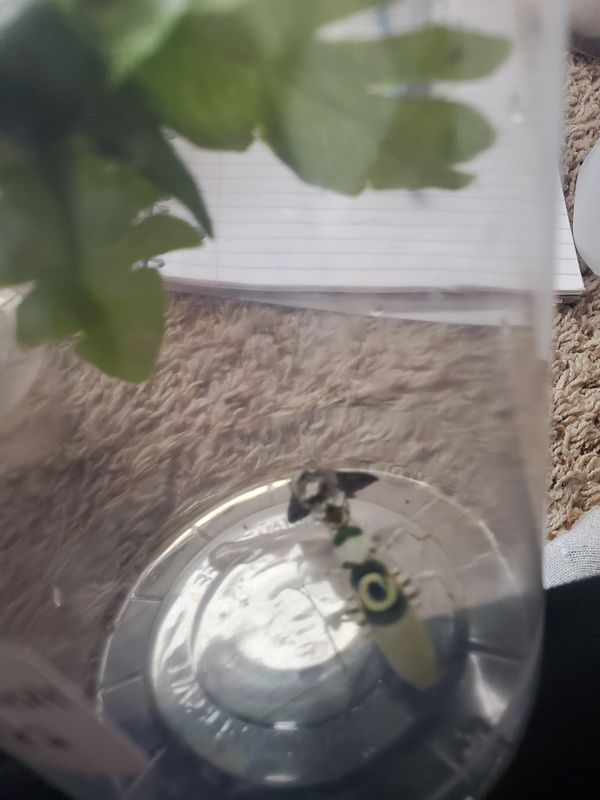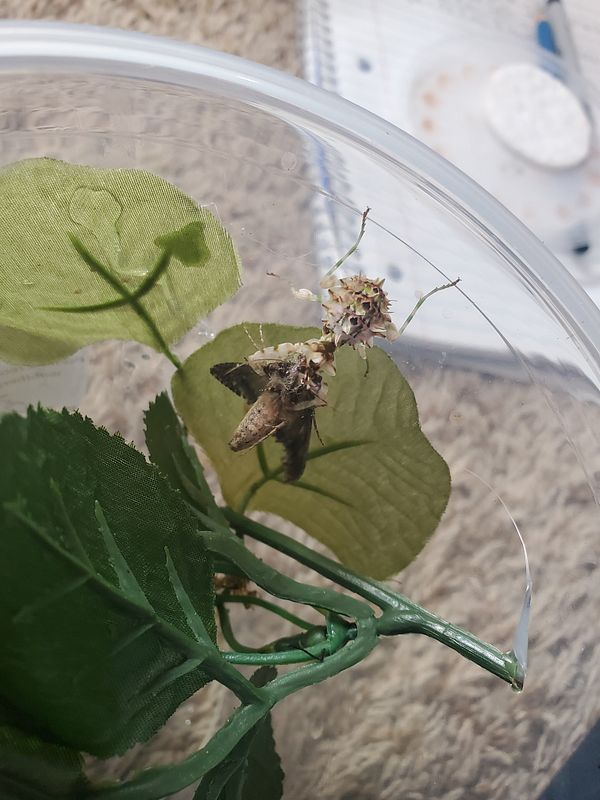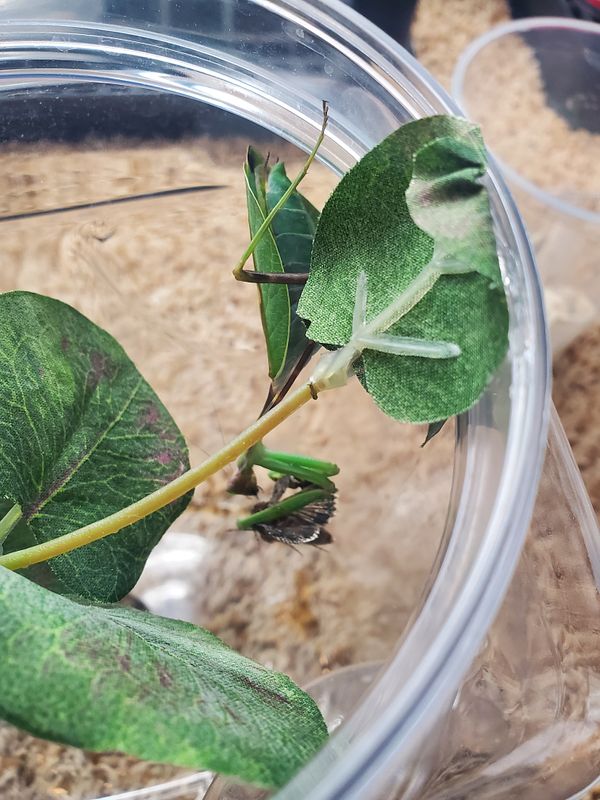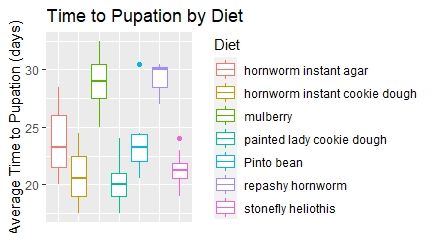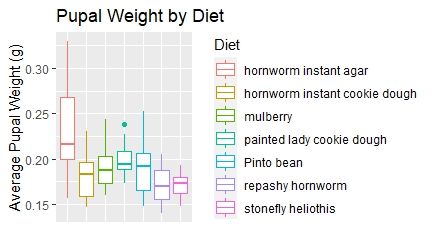hey folks
so recently I began rearing Trichoplusia ni, a generalist noctuid moth that is a great feeder. Approximately twice the size of a waxworm moth, these hardy moths are happily accepted by a number of mantis species
Here are adults in a breeding cup. There is a nectar dish at the bottom and a coffee filter at the top for oviposition. I put 10 in each cup
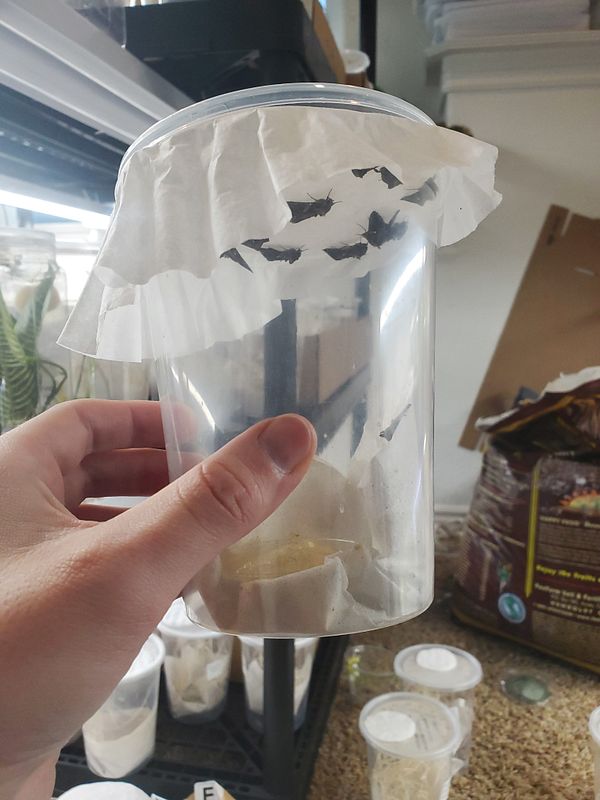
Freshly Eclosed Adults
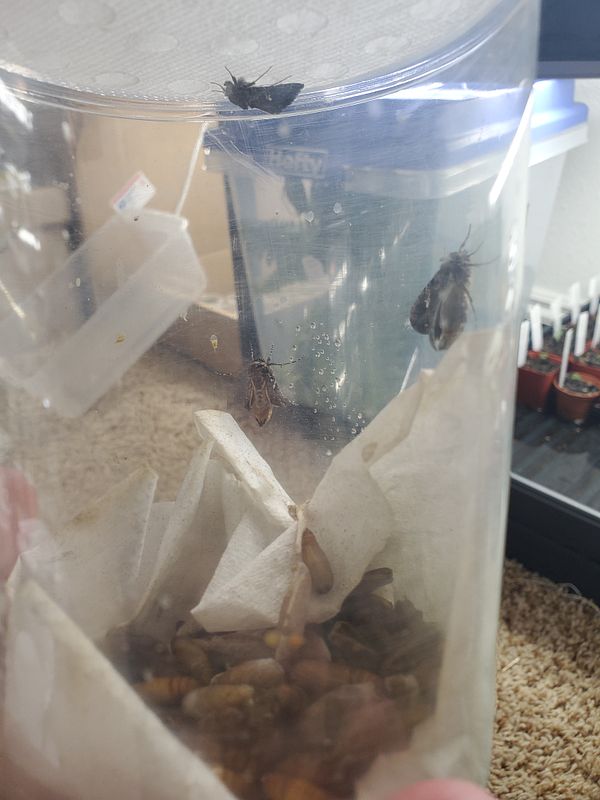
Larval setup

hatchlings
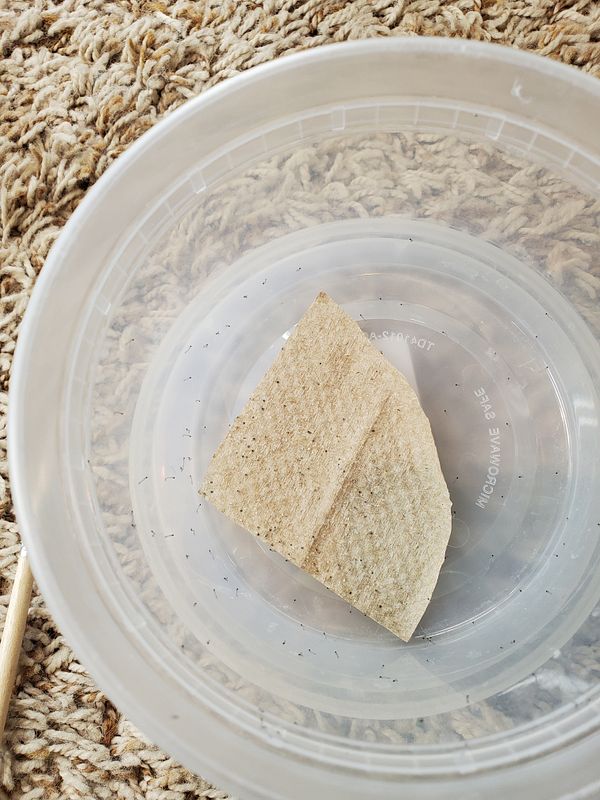
mature larvae

the eggs hatch in 3-4 days, the larvae develop for approximately 3 weeks, and they spend about 10 days as pupae
I rear them on artificial diet. I will update folks on the best AD for them but so far it looks like this stuff:
https://www.educationalscience.com/the-manduca-sexta-hornworm-microwave-cookie-dough-artificial-diet-50g-adt204
I make it a little runnier than the recipe calls for
Also i am going to experiment with this stuff
https://www.insectrearing.com/product/general-purpose-lepidoptera/
I have plenty of pupae for sale too
so recently I began rearing Trichoplusia ni, a generalist noctuid moth that is a great feeder. Approximately twice the size of a waxworm moth, these hardy moths are happily accepted by a number of mantis species
Here are adults in a breeding cup. There is a nectar dish at the bottom and a coffee filter at the top for oviposition. I put 10 in each cup

Freshly Eclosed Adults

Larval setup

hatchlings

mature larvae

the eggs hatch in 3-4 days, the larvae develop for approximately 3 weeks, and they spend about 10 days as pupae
I rear them on artificial diet. I will update folks on the best AD for them but so far it looks like this stuff:
https://www.educationalscience.com/the-manduca-sexta-hornworm-microwave-cookie-dough-artificial-diet-50g-adt204
I make it a little runnier than the recipe calls for
Also i am going to experiment with this stuff
https://www.insectrearing.com/product/general-purpose-lepidoptera/
I have plenty of pupae for sale too
Last edited by a moderator:




